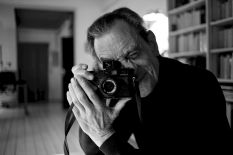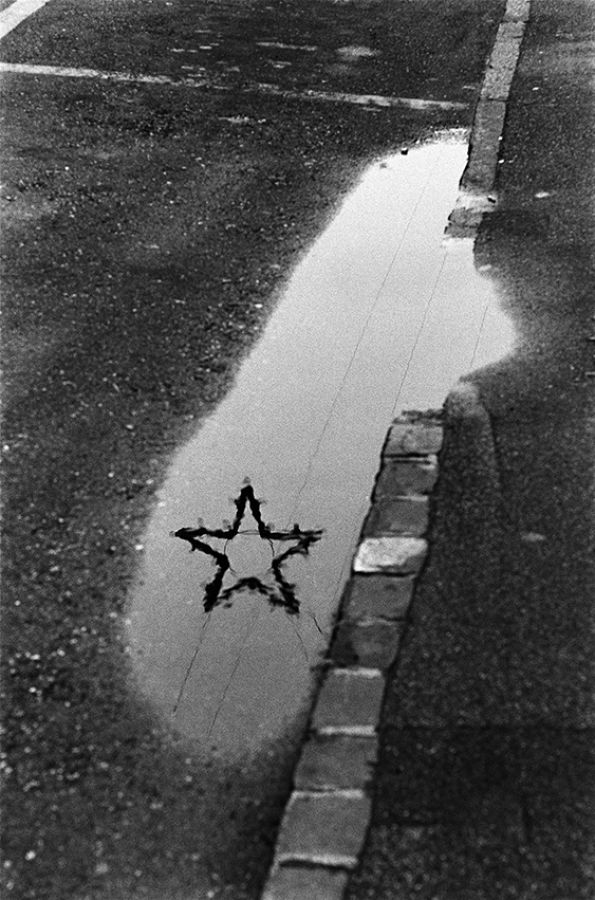
The watchwords here are order, framing and rigorous composition. In his photographs as well as in his minimalist, almost Spartan lodgings. Yet Olivier is a man overflowing with a sharp brand of sensitivity fuelled by his 360 degree vision of the world, of men and women. Physically, he’s a lot like lanky Britt in The Magnificent Seven (played by James Coburn), albeit without the dust on his denim shirt.
For Garros, the blade is his Leica, obviously - and he uses the edges of his blocked-off viewfinder like a scalpel. It’s hard to think of a photo-reporter so keenly aware of lines, shapes, surfaces and the myriad contortions made possible by the two-dimensional, black and white compression of our coloured and three-dimensional world. The human - even the social - are not obscured, however, as evidenced by his work on demonstrations, particularly those of 1995. He is also a portrait photographer with a capacity to obtain from his models, especially female ones, an emotionally intense presence that is almost unsettling.
Garros has also excelled in a seldom-practised photographic exercise, that of literary illustration. With Théophile Gautier’s España and Michel Déon’s Le Rendez-vous de Patmos, he has delivered two highly successful examples in a genre rarely ventured into by today’s publishers.
All at once a photo reporter, a studio photographer, a director of photography with several films to his credit, and a video artist, Olivier is a humble character who never flaunts his goods. Never seen in the socialite circles of today’s photography, he simply follows his own path. In a straight line.
Guy Mandary

 The watchwords here are order, framing and rigorous composition. In his photographs as well as in his minimalist, almost Spartan lodgings. Yet Olivier is a man overflowing with a sharp brand of sensitivity fuelled by his 360 degree vision of the world, of men and women. Physically, he’s a lot like lanky Britt in The Magnificent Seven (played by James Coburn), albeit without the dust on his denim shirt.
The watchwords here are order, framing and rigorous composition. In his photographs as well as in his minimalist, almost Spartan lodgings. Yet Olivier is a man overflowing with a sharp brand of sensitivity fuelled by his 360 degree vision of the world, of men and women. Physically, he’s a lot like lanky Britt in The Magnificent Seven (played by James Coburn), albeit without the dust on his denim shirt. 